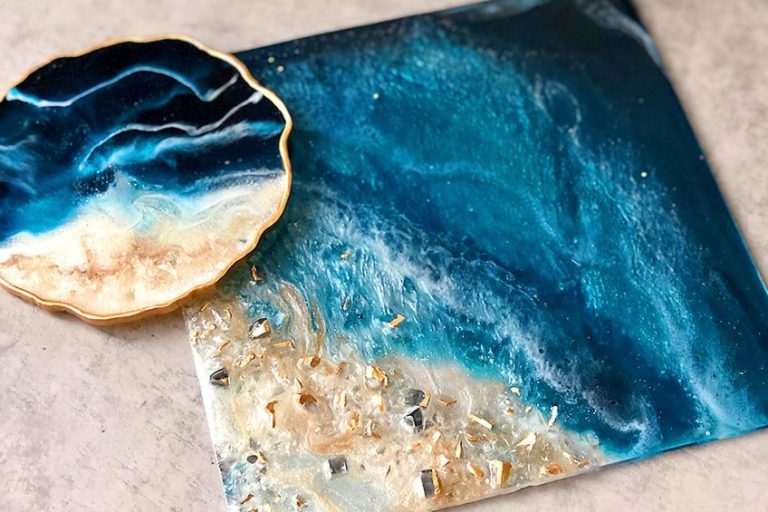How to Paint on Resin – Your Detailed Guide to Painting on Resin
Resin is one of the most uniquely modifiable materials on the face of the planet, making it possible for us to make basically anything we can think of. You can make anything from plates to coasters, to 3D shapes, to earrings, phone covers, bracelets, cutting boards, and even painting can be made with this seemingly miracle material. You can also add things to resin, things like glitter, small objects, acrylic paint, and even electronics can be added to the resin to personalize your designs, castings, and surface coatings. But what if you wanted to paint resin? Can you paint resin? Let’s have a look at whether resin can be painted, and if so, what challenges you might encounter while attempting it.
Can Resin Be Painted?
Can you paint resin? Painting on the resin is possible, but it’s a bit more challenging compared to say painting on things like canvas, wood, or even metals. Why is painting on resin so challenging? Unlike some of the materials we just mentioned, the resin is considered a sheer surface.
Sheer surfaces show little to no surface friction, this means that they’re really smooth and therefore have nothing for the paint to adhere to. Examples of surfaces with low friction are things like glass or icy surfaces like roads that have been frozen over. Much like these, the resin has a relatively low “grip” which means you’ll have to find a way to get around this to paint it.
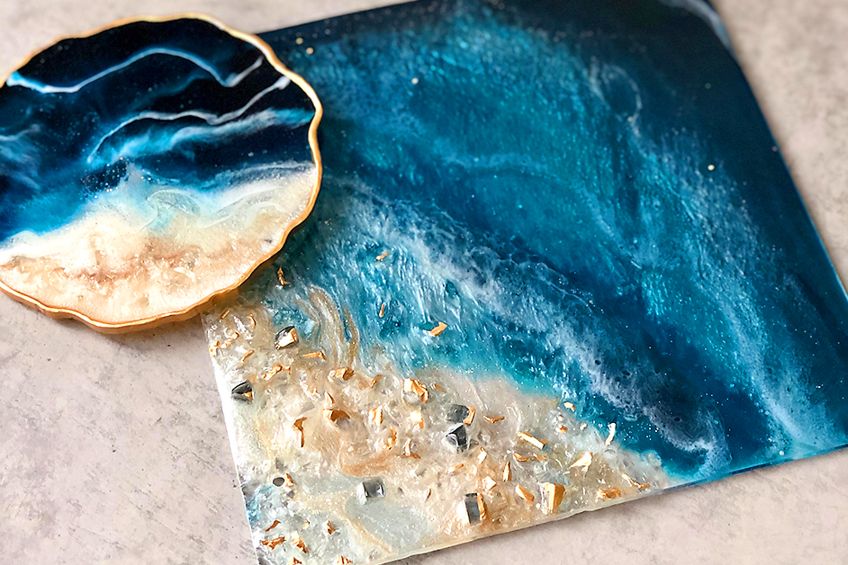
One of the best ways to go about painting resin is firstly to have a paint that works on it. Secondly, you’ll have to apply multiple coats of paint to ensure that the colors don’t run, ensuring that you allow each coat to dry completely between coats.
Sanding the surface lightly before painting can also help the paint to adhere, but since resin typically isn’t very porous the paint still won’t have much of a way to sink in adhere to the surface, therefore a combination of sanding, using the correct paints, using a primer, and applying multiple coats is the best approach. What is the right type of paint to use on resin you ask?
We have prepared a table to answer this very question for you, and if you can’t get your hands on any of these you can rest assured knowing that other paints do work on resin, you’ll just have to apply slightly more coats and have some patience if you’re in a pinch.
| Type of paint | Does it work on resin? |
| Oil-based paint | ✘ |
| Acrylic paint | ✔ |
| Enamel paint | ✔ |
| Latex paint | ✘ |
| Metalized paint | ✔ |
| Watercolor paint | ✘ |
Now that you know what kind of paint to use on resin, you’re probably wondering how to go about it. Well, you could get away with simply applying lots of coats of paint to your resin workpiece, but this can be time-consuming and pretty annoying as you’ll have to wait for each coat to dry between coats before you can apply the next.

This being said, knowing what kind of paint to use on resin is only half the battle; knowing how to apply your paint and prepare your surface is the key to achieving a near-perfect finish. If you have never worked with resin before this can seem daunting, but in reality, it’s quite simple. All it takes is a bit of patience and attention to detail and before you know it your resin casting will have a stunning one-of-a-kind finish.
Which Products Should You Use?
Knowing how to paint resin is great, but it can be tough to figure out which products to use to prepare and paint your resin. This is why we have taken it upon ourselves to track down the best acrylic paint and primer we could find and give you a decent breakdown of their characteristics. Ensure that you always use the best products you can get your hands on, as using inferior primer and paint can result in poor adhesion and finish.
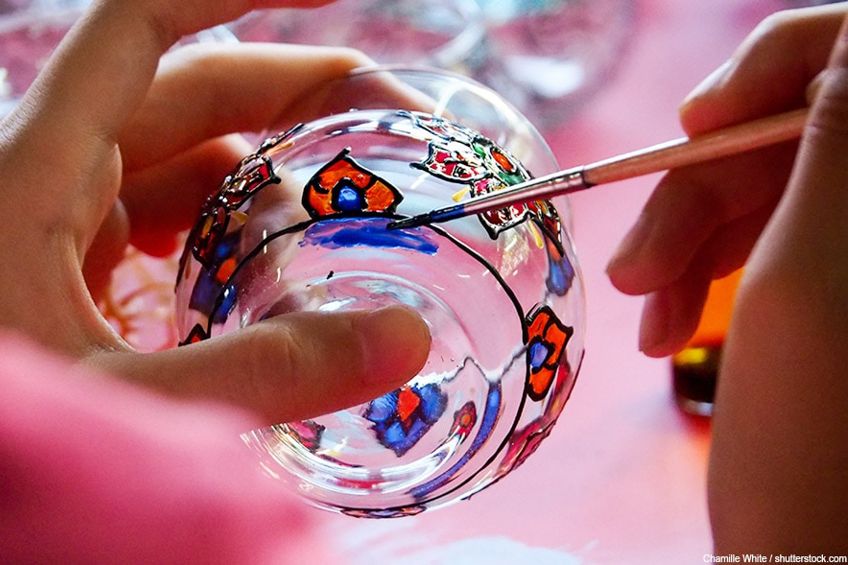
Best Acrylic Paint Set: CRAFTS 4 ALL Acrylic Paint Set
If you’re in the market for a great paint for resin, you can’t do much better than the acrylic paint set from the Crafts 4 all team. Their acrylic paint for resin produces a range of vibrant hues that are visually stunning.
Typically, when painting resin the colors can take on a sort of diluted variation of what they’re designed to be, but the Craft 4 All team seems to understand exactly what you need when painting resin. If you’re going to paint resin models in particular, this paint will allow you to get the intensity and attention to detail you need to make every facet of your design stand out.
- Uniquely crafted acrylic paints deliver color clarity and brilliance
- Suitable for most mediums, including ceramic, wood, and glass
- Non-toxic composition makes the paints suitable for children
Plus, it’s pretty versatile, you could use it on glass, ceramic, wood, metal, and of course, epoxy resin. Still not convinced that you’re dealing with top shell stuff? Well, this acrylic paint set is not toxic too, which means you can use it for indoor projects, and it’s safe for kids too.
This 24-piece paint kit is specially designed for detail-oriented workpieces, which makes it the perfect tool to paint resin models that are smaller and don’t have the best angles for applying too many coats.
[su_shadow style=”simple”][su_panel]- Versatile
- Easy to store
- Easy to use
- Intense colors
- Useful with detail orientated workpieces
- 24 colors to choose from
- Completely non-toxic
- Comes with three free brushes
- Paints are sold in low amounts
- Not ideal for larger workpieces
Best aerosol primer: KRYLON ColorMaster Ultra Flat Primer
We mentioned previously that the key to most crafting is in preparation. If you’re wondering how to paint resin models effectively, the key is a good primer (and a good sanding). For this exercise, the Krylon team has your back, offering you an all-in-one high-quality paint and primer combination that not only primers your workpiece but lays a base coat for you to work with too!
- Suitable for many materials, including plastic, resin, and wood
- Can be used effectively on interior and exterior projects
- Dries in under 10 minutes to give premium coverage and color
Besides being able to dry itself in around 10 minutes after being applied to your resin workpiece, Krylon offers you a variety of primer colors to choose from, in fact, they offer you exactly 36 combination paint and primers that work exceptionally well on most materials. It doesn’t just prime your surface and provide a base coat either, Krylon formula does a great job of smoothing out surfaces too! This can save you loads of time in having to go back and re-sand pieces that you might have missed and increase the quality of the overall finish.
[su_shadow style=”simple”][su_panel]- Available in 36 colors
- Primes and provides a base coat
- Dries in 10 minutes or less
- Extremely versatile
- Reputable brand name
- Easy to use
- Evens out surfaces
- Improves color intensity
- Contains volatile organic chemicals
- Does not dry clear
- Only available in up to 15-ounce cans
How to Paint on Resin
Painting on resin can get frustrating, but if you have the right tools, prepare your workpiece, and have some patience it can add a dimension to your workpiece that sets it apart from more conventional finishes like dyes and mica powder.
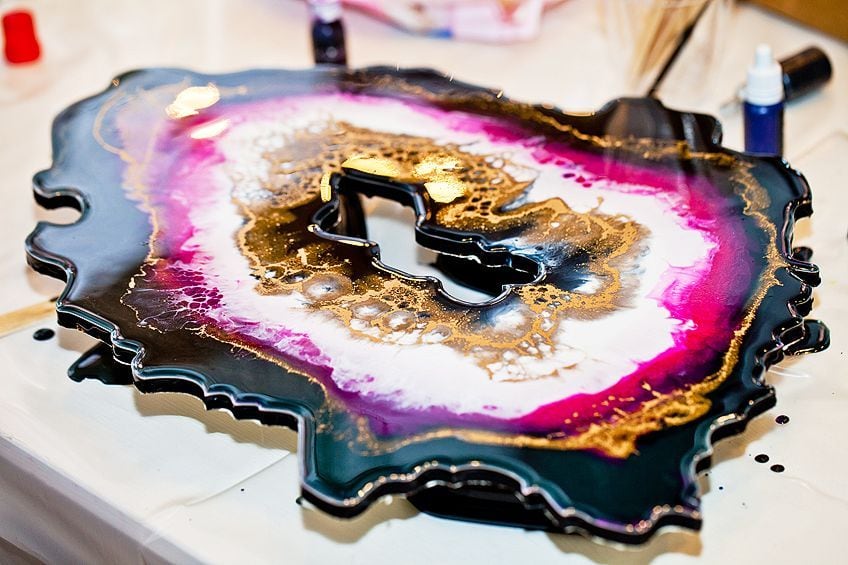
Below is a short tutorial detailing how to go about preparing and painting your resin castings or coatings. Keep in mind that when working with resin, you should always work in a well-ventilated work area and have the appropriate personal protective gear. Here are a few things you’ll need:
- Your resin casting
- Primer
- Preferably acrylic paint
- A paintbrush
- Some sanding papers
- A face mask
- Some gloves
- A tarp or old disposable paper
Prepare Your Workspace
Being prepared can save a lot of time and frustration while you’re painting, therefore, you should arrange your workspace in such a way that things are easy to find without cluttering the space directly in front of you. The best way to go about this is to place all of your tools on the side of your dominant hand, this way you know exactly where everything is, but you should remember to put them back there when you’re done with them. Lastly, pop a tarp or some old newspaper down on any surface that might accidentally get some paint on it. This minimizes clean-up and protects your surfaces.
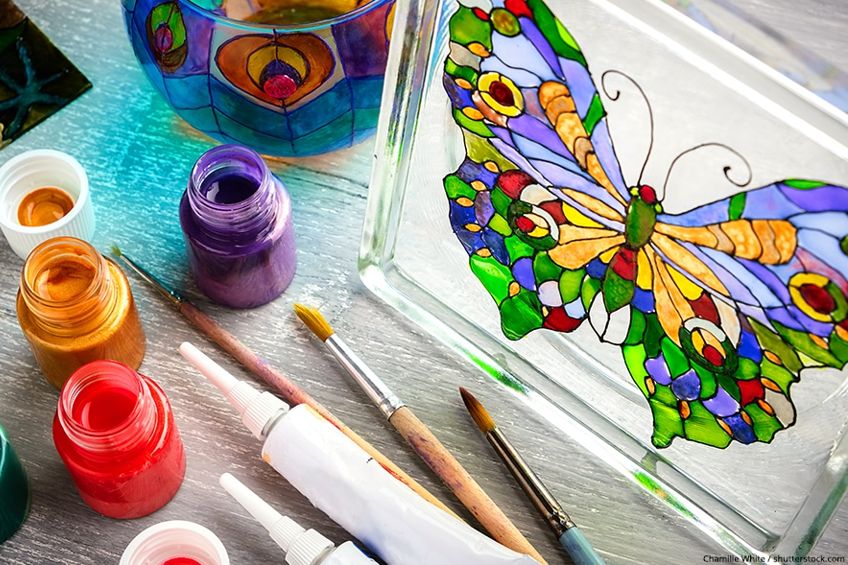
Clean Your Workpiece
While you might not think so, the resin can attract a lot of dusk and grime if left unattended for long periods of time. Ensuring that your workpiece is clean improves the chances that your paint will adhere to your workpiece. The best way to go about cleaning your workpiece is with some soapy water and a cloth, or if you really want to get into the cleaning, use a toothbrush to get those stubborn areas.
Once you’re satisfied, ensure that your workpiece is dry by giving it a good once-over with a clean, dry cloth.
Sand Your Workpiece
Like cleaning your workpiece, preparing the surface of your workpiece by sanding it is really important to ensure that your paint adheres to the best of its ability. You’re going to want to go with some really fine-grit sandpaper to ensure that you don’t change the overall texture of your workpiece too much.

Sand your workpiece in circular motions, ensuring that the surface is being raised evenly, this ensures that there aren’t any noticeable gradients on the workpiece that could be highlighted when you apply your first coat of paint. Once your workpiece has been sanded, ensure that you clean off any residue with a clean cloth or some compressed air.
Fill in Recesses on the Surface of Your Workpiece
Trying to paint resin is challenging enough as it is without having to paint in and around little recesses that might have formed. Knowing this, you should probably do your best to fill in any holes or little recesses that might be present on the surface of your workpiece. You can do so by using epoxy filler on the surface of your workpiece, simply prepare and apply it to the affected areas and allow it to dry and set for the manufacturer’s recommended time period.
Ensure your workpiece is clean before moving on to the next step in the process.
Apply Your Primer
Once your workpiece has been nicely filled and cleaned it’s time to prime it before you get to painting resin. Since your workpiece has already been sanded and filled, you can begin applying your primer immediately. You’re going to want to apply multiple coats of primer to ensure that the resin is able to receive the paint well, you can do so by applying your coat of primer and allowing it to set. You can then sand it lightly with some fine-grit sandpaper and apply another coat.
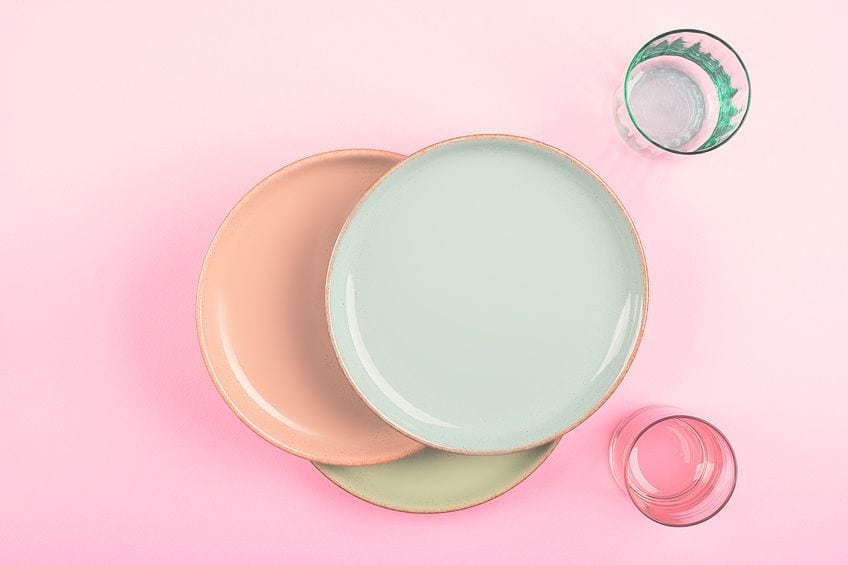
Spray-on primers are ideal for working with resin, as applying it with a paintbrush presents the same challenges that painting resin does. Ensure that you’re wearing your personal protective gear when working with aerosol products. Allow the resin to set in for the manufacturer’s recommended time period before moving on to the next step in the process.
Apply Your Paint
It’s finally time for you to paint your workpiece. Now that your workpiece has been primed it’s time for you to start painting, so prepare your paint by giving it a good stir with a mixing stick before getting some on your paintbrush.
Apply your first coat of paint, but ensure that it is a thin, consistent layer across the entire surface of the workpiece (or the section you’re working on at this point in time). Once you’re happy with your first coat, allow it to dry for the manufacturer’s recommended time period.
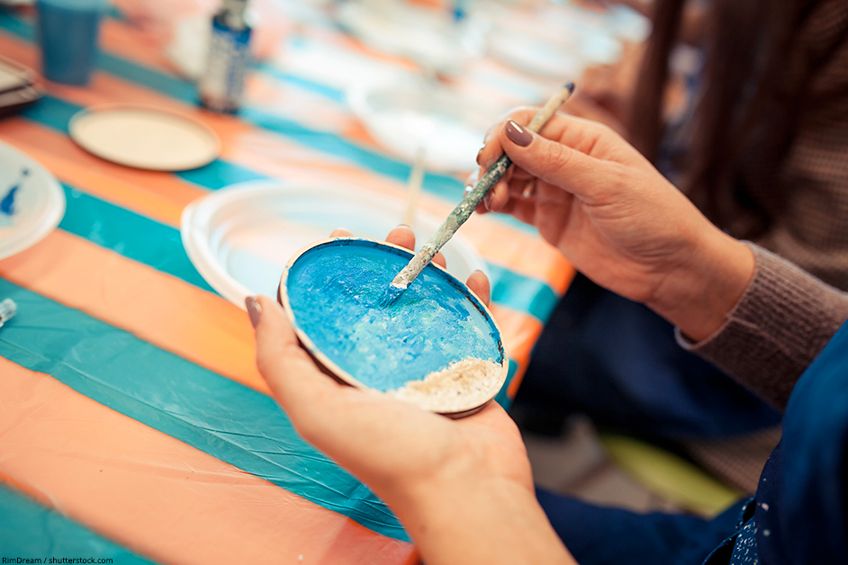
This process can be tedious and labor-intensive so ensure that you remain calm and don’t apply your next coat before the initial one has had a fair chance to dry up. Failing to do so will result in poor adhesion and by extension, a poor finish. This is how to paint on resin in the most effective way possible.
Once you’re satisfied with the finish you’ve created, you have the option of adding a varnish finish to protect your workpiece. This can seem like a tall order after hours of applying coat after coat but considering how much time and effort you’ve put into your masterpiece; we think it’s well worth a few extra minutes of your time.
Now that you know that resin can be painted, what makes it such a challenge to paint, how to paint resin models, and what a good acrylic paint and primer look like, it’s time for you to get out there and put your new-found knowledge to the test. Remember to always wear the appropriate personal protective gear and to always work in a well-ventilated area when working with resin and aerosols. Also check out our resin art tutorial.
Frequently Asked Questions
How to Paint Resin With Acrylic Paint?
Wondering how to paint resin with acrylic paint? The easiest way to go about this is to sand and primer your workpiece, then apply multiple coats of paint. Ensure that you allow each coat to dry completely before applying the next, or you risk ruining your finish.
Can I Paint Resin Without a Primer?
While this is entirely possible, it would take considerably more time and effort to paint resin without primer compared to primer. Resin doesn’t have a lot of surface friction which means paint doesn’t stick to it well, which could see you applying seven to eight coats of paint instead of three or four.
Can I Use Spray Paint on Resin?
While you can use spray paint on resin, you would still need to prepare the surface by sanding and priming, and the spray paint would have to be acrylic-based for it to work. Painting resin using a paintbrush does allow for more attention to detail though, but if you’re working with a larger workpiece spray paint might be a better option.
In 2005, Charlene completed her Wellness Diplomas in Therapeutic Aromatherapy and Reflexology from the International School of Reflexology and Meridian Therapy. She worked for a company offering corporate wellness programs for a couple of years, before opening up her own therapy practice. It was in 2015 that a friend, who was a digital marketer, asked her to join her company as a content creator, and this is where she found her excitement for writing.
Since joining the content writing world, she has gained a lot of experience over the years writing on a diverse selection of topics, from beauty, health, wellness, travel, and more. Due to various circumstances, she had to close her therapy practice and is now a full-time freelance writer. Being a creative person, she could not pass up the opportunity to contribute to the Art in Context team, where is was in her element, writing about a variety of art and craft topics. Contributing articles for over three years now, her knowledge in this area has grown, and she has gotten to explore her creativity and improve her research and writing skills.
Charlene Lewis has been working for artincontext.org since the relaunch in 2020. She is an experienced writer and mainly focuses on the topics of color theory, painting and drawing.
Learn more about Charlene Lewis and the Art in Context Team.
Cite this Article
Charlene, Lewis, “How to Paint on Resin – Your Detailed Guide to Painting on Resin.” Art in Context. January 31, 2022. URL: https://artincontext.org/how-to-paint-on-resin/
Lewis, C. (2022, 31 January). How to Paint on Resin – Your Detailed Guide to Painting on Resin. Art in Context. https://artincontext.org/how-to-paint-on-resin/
Lewis, Charlene. “How to Paint on Resin – Your Detailed Guide to Painting on Resin.” Art in Context, January 31, 2022. https://artincontext.org/how-to-paint-on-resin/.








